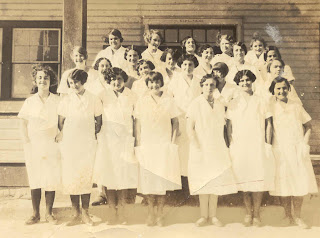
How were the European colonial powers able to conquer millions of people with so few troops? I suspect this postcard from French Congo, also known as Brazzaville, was meant to be comic. The type at the bottom of the card roughly translates as Congolese in city clothes and would allow the French recipient of this card to laugh at the natives trying to look European. The reality is that the European powers occupied much of the third world by seeking out native allies, usually playing off a favored tribal, religious, or ethnic group against those considered traditional rivals. While these men may have been servants, or models dressed up for the camera, it's also possible that they were some of the local collaborators used to subdue the majority of the native population. While the British and the French were masters at using locals to control, and when necessary, slaughter native populations, it was across the river from Brazzaville in the Belgian Congo where slaughter was at it's most destructive. Leopold II, the second king of Belgium, unable to interest his own government in taking African colonies, established a private company, The International African Society, with himself as the head and sole owner, to subdue the Congo region as a private colony. At first, Leopold's interest was ivory. When that proved less profitable than expected, his interest moved to rubber. Using both European and native troops, Leopold took native women for forced prostitution, cut off the right hands of workers unable to meet quotas, and killed people in the millions. Low estimates run from several million to as high as fifteen million. Ten million dead is a probable best estimate. Eventually the Congo Free State became an embarrassment and Leopold was forced to relinquish control to the Belgian government. All this from a postcard? Researching an image can lead in many directions. Phototypie, in the type on the front side of the card is the French translation of collotype, a mechanical photographic process that allowed for the mass production of black & white prints. I assume that Meyrignac and Puydebois were the publishers of the card. Brive is a town in France. On the back, "La correspondance au recto n'est pas acceptee par tous les pays etrangers. (Se renseigner a la Poste.)" translates to Correspondence on the front is not accepted by all foreign countries. (Inquire at the post.) At least that's how I think it translates.






















































